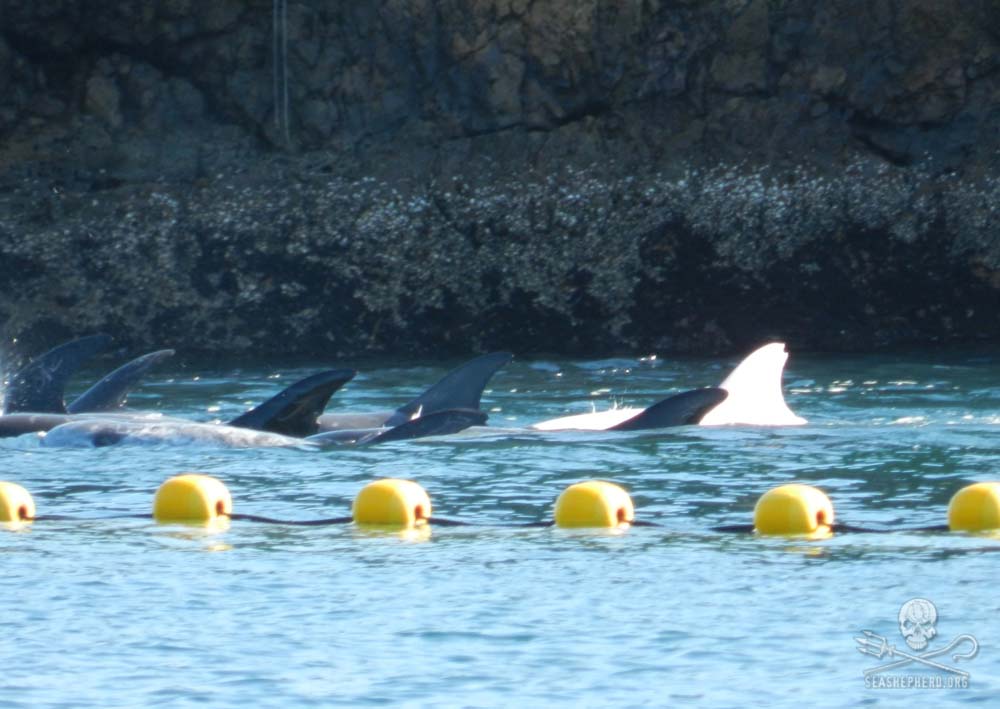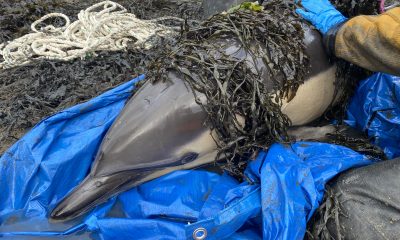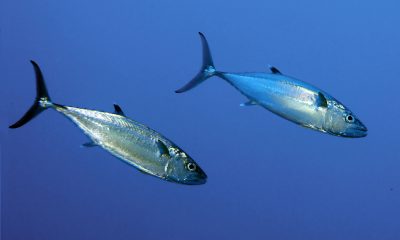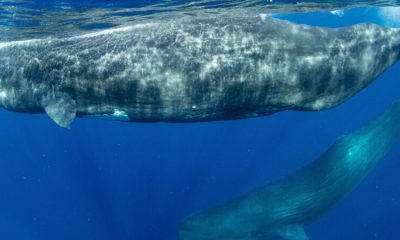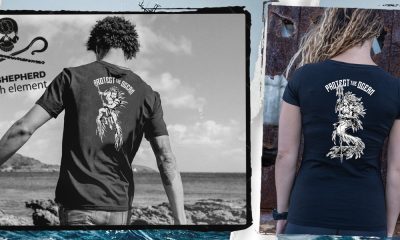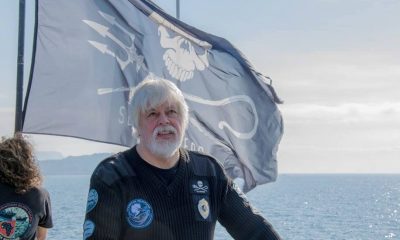News
A Special Report From Sea Shepherd’s Operation Henkaku
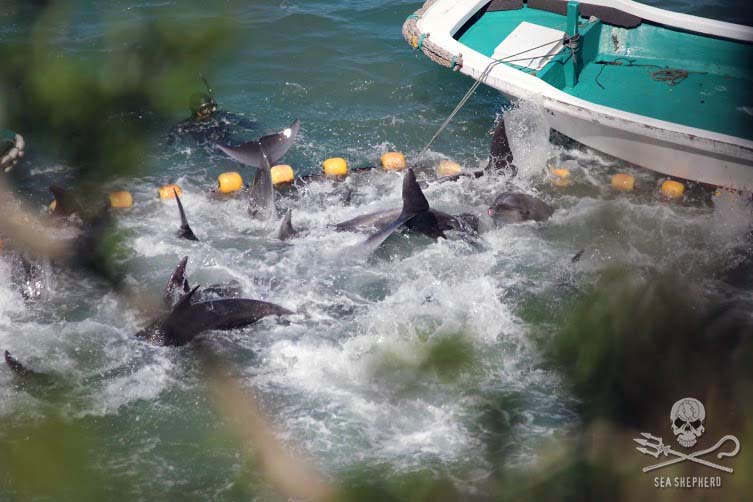
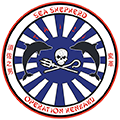 The 2015-2016 Taiji dolphin drive hunt is over. This season, the government of Wakayama Prefecture, Japan, authorized Taiji’s dolphin killers to capture or slaughter up to 1,873 dolphins. In some of the lowest numbers observed in recent years, between 630 and 650 dolphins were ruthlessly driven into the cove and slaughtered. Another 117 were taken captive, destined to spend the rest of their lives in shallow tanks, cement pools, or cramped sea pens performing circus tricks for paying tourists.
The 2015-2016 Taiji dolphin drive hunt is over. This season, the government of Wakayama Prefecture, Japan, authorized Taiji’s dolphin killers to capture or slaughter up to 1,873 dolphins. In some of the lowest numbers observed in recent years, between 630 and 650 dolphins were ruthlessly driven into the cove and slaughtered. Another 117 were taken captive, destined to spend the rest of their lives in shallow tanks, cement pools, or cramped sea pens performing circus tricks for paying tourists.
Sea Shepherd’s dedicated team of volunteer Cove Guardians was on the ground every single day of the hunt. Livestreaming the capture, selection, and slaughter, the Cove Guardians continued to bring international attention to this outrageous crime against the oceans. Despite ridiculous claims by those involved, the Taiji dolphin drive hunt is not tradition; it is a profit-driven enterprise supported by the Japanese government and fueled by the lucrative worldwide trade in captive dolphins.
Although several Cove Guardian veterans were barred entry into Japan, Sea Shepherd’s Cove Guardians stood their ground, as they have since 2010, to make sure the world sees exactly what Taiji tries to hide. The dolphin killers continued to use tarps to try to hide the killing from Sea Shepherd’s cameras, but tarps can’t hide the blood that turns the water from blue to red or the sounds of the frenzied dolphins as they face their executioners. Sea Shepherd’s livestream footage irrefutably dismissed any and all claims of a “humane slaughter.” During one slaughter, a pilot whale escaped from beneath the tarps after being pithed with a metal rod. For several minutes, the profusely bleeding and suffering animal attempted to swim away, eventually slipping under the surface of the water.
Each drive brought new horrific sights and each month was marked by even more merciless acts of violence on the part of the killers.
The annual hunt began on September 1, 2015. The first drive of the season ended with a pod of Risso’s dolphins netted into the cove on September 11. During the ensuing slaughter, the Cove Guardians observed one dolphin trying to escape by launching out of the water and up onto the jagged rocks in the killing cove. As some of the killers dragged the doomed dolphin back into the cove, others looked on and laughed at the plight of the terrified animal.
Following the slaughter of another pod of Risso’s dolphins on October 19, 2015, the killers dumped several bodies at sea. Sea Shepherd believe they took this extreme measure to avoid exceeding their annual Risso’s dolphin-killing quota. The next day, the Cove Guardians discovered the remains of a dead juvenile Risso’s dolphin washed-up on the beach.
November 19, 2015, began four days of anguish as approximately 69 – 74 pilot whales were captured and held in the cove. By November 22, 46 members of this intergenerational family had been slaughtered, and several more succumbed from the sheer stress of the drive and ensuing selection ordeal. One pilot whale was taken captive but died days later in a Taiji harbor sea pen.
December 2015 saw a pod of bottlenose dolphins captured and held in the cove for three days. Bottlenose is the dolphin species most prized by the captive industry. With the assistance of trainers, 30 animals were taken captive. Those dolphins not deemed to be “pretty” enough for captivity were slaughtered while the same trainers laughed and watched.
January always seems to be an especially bloody month in Taiji. This year was no exception.The killers hunted on 22 days and slaughtered pods on 14 of those days. Forty percent of the entire 2015-2016 killing quota was met in January 2016. Nine drives took place in February 2016, with 20 more bottlenose dolphins taken captive and forced into the tiny sea pens in Taiji harbor.
The 105 bottlenose dolphins, seven Risso’s dolphins, one pilot whale, and four Pacific white-sided dolphins taken into captivity during the 2015-16 Taiji dolphin hunt are now condemned to a dismal “life” as slaves to the captive industry. Forced to perform circus tricks in order to receive a reward of drug-laced frozen fish, many of these animals will die prematurely from stress, trauma or both.
The Taiji dolphin killers repeatedly claim that the dolphin drive hunt is their “tradition.” They also blame the dolphins for decreasing fish stocks and say that the drive hunt is a form of “pest control.” At the same time, they proclaim the pods of dolphins and whales who migrate through the waters of Taiji to be their property. In reality, the desire to hunt and capture dolphins has nothing to do with pest control or tradition. It has everything to do with greed. Captive dolphins are a multi-million-dollar worldwide industry that starts in Taiji, Japan.
The Taiji dolphin killers are profiting from a demand for captive dolphins. If you proudly display a photo kissing a captive dolphin, if you support marine parks and dolphinariums, you might as well stand alongside the killers in Taiji’s bloody cove. Your entrance fee to these places fuels the tanks for another hunt.
After five campaigns of Operation Infinite Patience, this season’s Operation Henkaku sought to focus specific attention on the captive trade. Taiji is all about supply and demand. The hunting and slaughter of dolphins will not end for good until the demand for captive dolphins ends for good.
While the grueling 2015 -2016 Taiji dolphin drive hunt season has now ended, the pressure on those who hold dolphins captive must not! Let’s close down the killing cove for good by bankrupting the worldwide captive trade. Dolphins are not assets, commodities or property. They don’t belong on transport trucks or cargo planes, and they certainly don’t belong in tanks. We must all continue to be a voice for the dolphins. Sea Shepherd have called on everyone who followed Operation Henkaku to keep pressuring travel agents, hotels, cruise lines, marine parks, and dolphinariums to stop profiting from the misery of captivity.
Tell everyone you know to “Just say NO to the dolphin show!”
For more information, visit Sea Shepherd’s Operation Henkaku site here.
News
Book Review: Fire on Monroe Bravo by Fred Lockwood

Fire on Monroe Bravo is the latest book in the Jack Collier series by Fred Lockwood. Our story begins with our lead characters, Jack and Sandro, owners of Marine Salvage & Investigation Company, arriving on the Monroe Bravo Oil & Gas Platform in the North Sea. Having secured a contract for their vessel the MV Stavanger to act as support ship to the platform for TransGlobal Oil, our protagonists are on a celebratory visit.
However almost as soon as they arrive a series of explosions rock the platform, causing huge damage, loss of life and the very real danger of a massive human, ecological and financial disaster.

As the danger mounts for both our heroes and the surviving workers, Jack and Sandro will have to escape the inferno, all while trying to save the platform and the men still trapped unable to help themselves.
The disaster sets the scene for the unfolding story lines following the fate of the platform and our main characters, the police investigation into a suspected terrorist act and the actions of TransGlobal Oil as they attempt to navigate the pubic outcry and financial repercussions.
In his eighth book, Fire on Monroe Bravo, Fred Lockwood delivers an explosive thriller, with plenty of above and in-water drama, and our heroes fighting for survival, what more can you ask for?
We thoroughly recommend this read and look forward to the next in the series. For more information about his book series, you can check out the reviews of his previous books here on Scubaverse.
- Title: Fire On Monroe Bravo
- Author: Fred Lockwood
- ISBN: 979-8325324536
Available in a paperback version and for Kindle from Amazon and book stores.
Blogs
Alonissos: The complete diving destination (Part 1)

In June we were incredibly fortunate to be invited to dive in Alonissos, a small Greek Island in the Sporades island chain located in the North Aegean Sea. While I have long been a big fan of the Greek Islands as a great holiday destination, I had not had the opportunity to do any diving on previous visits and Mike and I were extremely excited to see what Alonissos had to offer both above and below the surface!

The Sporades are easily accessible via the airport in Skiathos (the first island in the chain), which is served by Jet2 flights from all major UK airports from May through October. Numerous ferries and charter boats make island hopping from Skiathos Town a breeze. After an hour boat ride, the picturesque port of Patitiri was a wonderful introduction to Alonissos, where we were met by our gracious hosts Kostas of Albedo Travel and Dias of Alonissos Triton Dive Center. Mike and I were delighted to be staying at the Paradise Hotel, aptly named for its stunning views over the sea and great location for walking to the waterfront.

Alonissos is beautifully situated in the National Marine Park of Alonissos and the Northern Sporades, the largest marine protected area in Europe. The surrounding seas offer fabulous marine life, including incredibly rare species such as the Mediterranean monk seal. They boast deep walls covered in gorgonians and sponges, stunning topography with caverns, swimthroughs and pinnacles, and the first accessible ancient shipwreck from 500BC!

In locations where historical sites have been reported, the waters are largely restricted, but with collaboration between government, underwater archeologists and dive centres, incredible underwater museums are being created for a truly unique diving experience. Alonissos is home to the first of these, the Ancient Shipwreck of Peristera Accessible Underwater Archeological Site. The chance to dive into history (along with reports of healthy reef life and amazing underwater topography) meant Mike and I were keen to get in the water.

Our introduction to the diving around Alonissos was at the Agios Georgios Pinnacles, in the channel between Alonissos and Skopelos. This fantastic site was named “The Chimney,’ and proved to have a huge amount to see. We got to a decent depth here (over 25m), and marvelled at a colourful reef wall with a wonderful swim through whose rocky walls were absolutely covered with life. As well as brilliant topography there was no shortage of macro life here. We saw numerous nudibranchs, five different species in total. The second dive at Mourtias reef nearby was a shallower dive along a nice wall with lots of crevices. Several moray eels and grouper called this site home. We enjoyed looking in the crevices for lobster and smaller benthic life, such as cup corals and tunicates.

Our itinerary allowed us two dives a day with afternoons left to explore the island with our hire car and evenings to enjoy the famous Greek hospitality. This proved to be a lovely mix of in-water and land based diversions.

The next days diving to the Gorgonian Gardens and Triton’s Cave was to be even better! These two stunning sites are nothing short of fabulous. The Gorgonian Gardens was a deep wall near to the Agios Georgios islands. The ever-present currents in this deep channel meant that the sea life was amazing … the namesake Gorgonian sea fans dotted the wall at a depth of 30 to 50 meters, getting ever larger the deeper we went. Above 30m was by no means less beautiful, with sponges, corals, scorpionfish, moray eels and some rare and colourful nudibranchs.

The second shallower dive of the day was to Triton’s Cave or the Cavern of Skopelos, on the east side of that island. The spectacular rock formations had wild striations both above and below the water making a truly epic topography. The cavern entrance was at 14m, and big enough for a buddy pair, winding up to 6m and passing two beautiful windows out into the blue. Emerging from the cavern, the light at the shallower depths and the incredible rock formations made for a fantastic gentle swimming safety stop and we all surfaced by the boat with massive grins.

Check out our next blog :Alonissos: The complete diving destination (Part 2)” to hear about our amazing dive on the 2500 year old Peristera Wreck!
Thanks to:
Alonissos Triton Dive Center https://bestdivingingreece.com/
Albedo Travel https://alonissosholidays.com/activities/
Paradise Hotel https://paradise-hotel.gr/
Alonissos Municipality https://alonissos.gr/en/
-

 Blogs2 months ago
Blogs2 months agoDiving With… Nico, Ocean Earth Travels, Indonesia
-

 News1 month ago
News1 month agoMurex Bangka Announce New Oceanfront Cottages & Beachfront Dining
-

 Blogs2 months ago
Blogs2 months agoA new idea in freediving from RAID
-

 Marine Life & Conservation1 month ago
Marine Life & Conservation1 month agoIceland issue millionaire whale hunter a licence to murder 128 vulnerable fin whales
-

 Marine Life & Conservation2 months ago
Marine Life & Conservation2 months agoThe Shark Trust Great Shark Snapshot is back
-

 News3 months ago
News3 months agoCharting New Waters; NovoScuba Goes Global with the Launch of their Revolutionary Dive Training Agency!
-

 Gear News1 month ago
Gear News1 month agoNew Suunto Ocean – a dive computer and GPS sports watch in one for adventures below and above the surface
-

 Marine Life & Conservation Blogs2 months ago
Marine Life & Conservation Blogs2 months agoBook Review: Plankton


